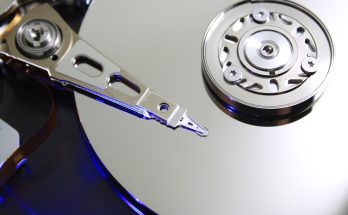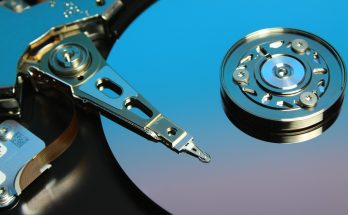Did you know a damaged boot sector can cause 78% more computer startup failures? This part of your hard drive is key to booting Windows. If it’s damaged, you’ll see error messages that stop your system.
In this guide, you’ll learn how to fix a damaged boot sector. This will make your computer work right again and keep your data safe. We’ll show you how to handle viruses, corrupted partitions, and missing master boot records. Follow our simple steps to fix your system.
Understanding Boot Sector Problems and Their Impact
Boot sector problems can show up in many ways. You might see “Error loading operating system,” “Missing operating system,” or “Invalid partition table.” These issues often come from viruses, corrupted tables, or lost MBR code. If you ignore these problems, your system might become unstable, lose data, and you won’t be able to start your operating system.
Common Boot Sector Error Messages
When the boot sector gets damaged, you might see error messages. These say the operating system is missing or the partition table is wrong. These errors stop your computer from starting, causing trouble and risking data loss if not fixed quickly.
Causes of Boot Sector Damage
Damage to the boot sector can happen for many reasons. Partition recovery, file system repair, or mbr repair issues can cause it. Viruses, disk errors, power failures, and user mistakes can also damage it.
Risks of Ignoring Boot Sector Issues
Ignoring boot sector problems is risky. Your system could become unstable, lose data, and you might not be able to start your operating system. It’s important to fix these problems quickly to keep your computer working well and safe.
Boot Sector Recovery: Methods and Solutions
When you face boot sector issues, there are many ways to fix your system. You can use antivirus software to get rid of viruses. Or, you can fix the master boot record with Command Prompt. There are lots of solutions to these problems.
The Bootrec.exe utility is great for Windows users. It can fix the Master Boot Record (MBR), write a new boot sector, or rebuild the Boot Configuration Data (BCD) store. This tool is very useful for disk troubleshooting and system restoration.
If you don’t have Windows installation media, tools like AOMEI Partition Assistant can help. These virus removal and recovery tools can fix your system without a full reinstallation.
- Use antivirus software to find and remove boot sector viruses.
- Use the Bootrec.exe utility in the Command Prompt to fix the Master Boot Record, write a new boot sector, or rebuild the BCD store.
- Try third-party boot sector recovery tools like AOMEI Partition Assistant when you don’t have installation media.
It’s important to fix boot sector problems quickly. This keeps your system healthy and working well. By using the right disk troubleshooting and system restoration methods, you can quickly fix your computer.
Using Command Prompt for Boot Sector Repair
If your Windows computer has a damaged boot sector, the Command Prompt can help. You can get into the Windows Recovery Environment (WinRE) to use Bootrec commands. These commands fix MBR corruption, missing boot sectors, and BCD store problems.
Essential Bootrec Commands
- Bootrec /FixMbr – Repairs the Master Boot Record (MBR), which is key for loading the operating system.
- Bootrec /FixBoot – Writes a new default boot sector to the system partition. This can fix missing or corrupted boot sectors.
- Bootrec /ScanOs – Scans for installed Windows installations and updates the BCD store.
- Bootrec /RebuildBcd – Rebuilds the Boot Configuration Data (BCD) store. It contains info about available operating systems.
Advanced Recovery Options
For complex boot sector problems, you might need the diskpart utility. It manages disk partitions. But, use these commands carefully. Wrong use can harm your system.
Troubleshooting Common Command Issues
When fixing boot sector issues with commands, follow your Windows version’s instructions closely. Make sure to use the right commands in the correct environment, like the Windows Recovery Environment. Wrong steps can cause more problems or even lose data.
Alternative Recovery Methods Without Installation Media
If you don’t have Windows installation media, there are other ways to fix boot sector issues. These methods use third-party tools that are easy to use and fix problems automatically.
Easy Recovery Essentials lets you create a bootable media to fix the boot sector. AOMEI Partition Assistant is another tool that can find and fix boot sector problems without a Windows installer.
Having a backup of your Master Boot Record (MBR) is key for quick fixes. By making a backup, you can easily restore the MBR and start your system again.
When using third-party tools, pick ones that are trusted and reliable. Follow the instructions well to avoid losing data. These methods can save the day when you can’t use Windows installation media. But, they need more effort and care.
Conclusion: Prevention and Best Practices
Keeping your system’s boot sector safe is key for stable and reliable performance. Repairing a damaged boot sector is doable, but prevention is better. By following good system maintenance and protection, you can lower the chance of boot sector issues.
It’s important to keep your antivirus software up to date. Also, make sure your system has the latest security patches. Regular backups of your important files can help too. This way, you can easily get back to a safe state if the boot sector gets damaged.
Stay safe by avoiding downloads from unknown sources. Always scan removable media before using it. Watch your system for any odd behavior. These steps help protect your computer’s boot sector and keep your system healthy. A well-protected device is your best shield against boot sector problems.
FAQ
What is the boot sector and why is it important?
The boot sector is key to your computer’s hard drive. It holds info for the file system to find the volume. It’s the first 512 bytes of your hard disk. It’s vital for starting your operating system.
Damage to it can cause error messages. This stops Windows from starting.
What are the common boot sector error messages?
You might see “Error loading operating system,” “Missing operating system,” or “Invalid partition table.” These problems can come from viruses, corrupted tables, or lost master boot record code.
What are the risks of ignoring boot sector issues?
Ignoring these problems can make your system unstable. It can also lead to data loss and not being able to start your operating system. It’s important to know how to fix these issues.
What are the methods for boot sector recovery?
There are ways to fix the boot sector. You can use antivirus software to remove viruses. Or, you can fix the master boot record with Command Prompt.
Special tools like AOMEI Partition Assistant can also help.
How can the Command Prompt be used for boot sector repair?
The Command Prompt has tools for fixing the boot sector. You can get to it through the Windows Recovery Environment. It has commands like /FixMbr, /FixBoot, /ScanOs, and /RebuildBcd.
These commands can fix MBR issues, write new boot sectors, and rebuild the BCD store.
What alternative recovery methods are available without installation media?
Without Windows installation media, you can still recover. Tools like Easy Recovery Essentials or AOMEI Partition Assistant can create bootable media. They can also repair boot sectors.
How can you prevent boot sector damage?
Keeping your boot sector safe is important. Update your antivirus software regularly. Make system backups and avoid sudden shutdowns.
After fixing the boot sector, run disk check utilities like CHKDSK. This keeps your file system safe.



